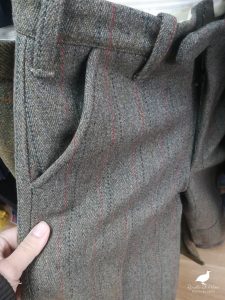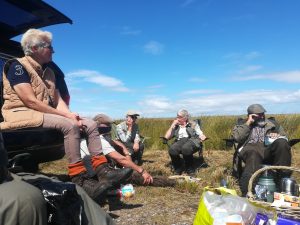Charity shops: the bargains hunter’s realm
What can I do in a bit of spare time?
I can tell you about charity shops! They are a very British thing. An American friend told me they also have thrifty stores, but I have never seen any while I was living in the US. Therefore, for me, charity shops are something British, like wine gums, or fish and chips. Brits might think these shops do not deserve so much emphasis, but I am quite keen on them since I don’t have them in Italy!
What are charity shops? They are shops managed by different charities and that sell items that people donated them. As you can guess, all the profits go to charity and most of the employees are volunteers. What you can find in a charity shop is usually second-hand, but I managed to find a tweed hat and a tweed door stopper (in a fox shape) which were new with labels. Among the other things, they sell figurines, books, prints, mugs, watches, frames, mugs and…. clothes! It has become an habit, for me, to go and raid all the local charity shops each time I go to England.

I like them because they look like real shops, they have proper and nice windows and all the items are presented at their best: one of the shops in Barnard Castle even places its clothes by colour! During the years, I learnt that some charity shops are better than others. To get quality items at ridiculous prices, you should pick the best locations, such as wealthy towns and neighbourhoods. Furthermore, some charities are more attractive to donors than others. I visited shops in: Barnard Castle, Stanhope, Hexam, Consett (shocking experience), Grantown – on – Spey and Sittingbourne so far, and, unfortunately, forgot to check those in Harrogate, during my short stay. All the items I purchased, however, come from Barnard Castle and, as far as I can recall, I bought: a wrist watch, a pair of purple jeans, three framed prints, a new tweed hat (paid 3.99£ and on sale online for 16.99£) a new tweed fox (door stopper) and three shirts, one of which, was paid 3.50 , but worth 75£ according to Amazon! I might have forgotten something and I “lost” a nice tweed bag due to indecision. Besides the bargains that came home with me, I spotted some other good deals such as: some great furniture in Sittingbourne, a nice wedding gown in Hexam priced 20£ (in size 12 in case anyone needs it) and…. two pairs of men’s tweed breeks.
These tweed breeks ignited quite a turmoil at trials: strictly trained as a bargain hunter since childhood, I later developed some good skills as personal shopper. I can’t stand a bargain being ignored, or ending up with someone not so nice that probably does not deserved it. So… I started telling all the “worthy” trialers that there were two pairs of almost new tweed breeks in a Barnard Castle charity shop. That they were new, priced 7.99 £ each, and could be found in the “old people” (age.uk) shop, the one “by the funeral home”. Well, despite my vague directions, a bunch of people from the field trial circuit showed up at that shop during the same afternoon. Some of them bumped into each other, but all of them denied they had purchased the breeks. However, I went back on the to the shop one day later and the breeks were gone!

Here in Italy, some parishes organize a charity draft (the Italian literal translation would be a “charity fish”) yearly, but most the items you can win by purchasing a ticket are far away from being nice things to look at… and no second hand clothes at these fisheries.
Here second hand clothes end up in some huge yellow rubbish bins that are, indeed, owned by charities. These clothes, however, are re-sold to dealers and sometimes can be spotted in some open air markets, but there is no warranty this will happen. Open air markets are usually good places to find bargains, but the quality of offered items has dropped dramatically in the last few years. There are many more Chinese sellers, selling products that scream “made in China”. It is difficult to find used clothes but, in the biggest cities, like Milan, some sellers have traditional German and Austrian hunting clothes. Not really my thing, but friends with German dogs love them and I admit I would do the same if they were “tweed”.
Besides looking for bargains online, then, what else can I do? Well… apparently one of the charities managing the yellow rubbish bins is bound to open a “vintage” clothes shop in my city next Autumn: I’ll definitevely investigate on the quality of their offers!
Still curious about British trials? Check the section A Month on the Moor or click here.



